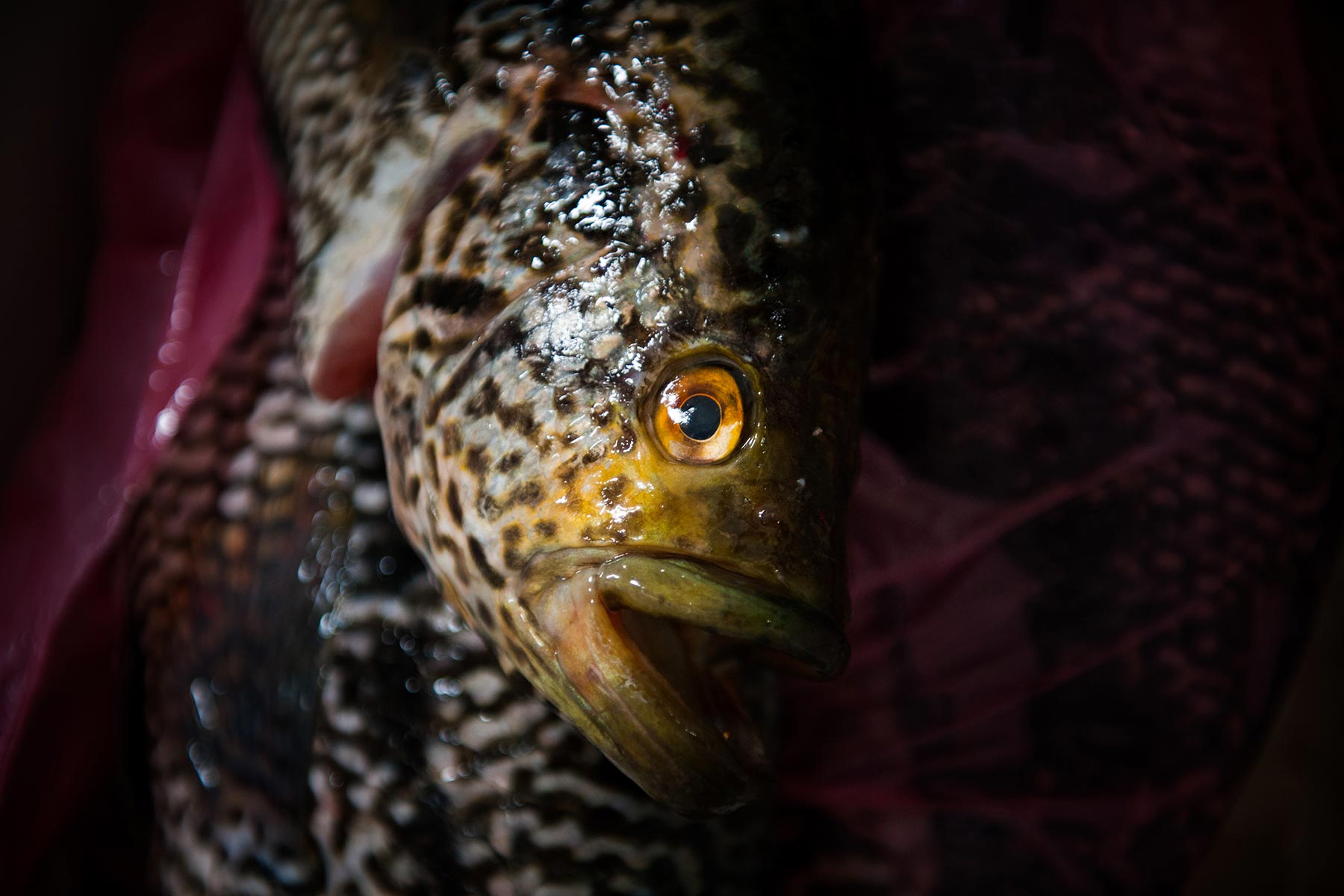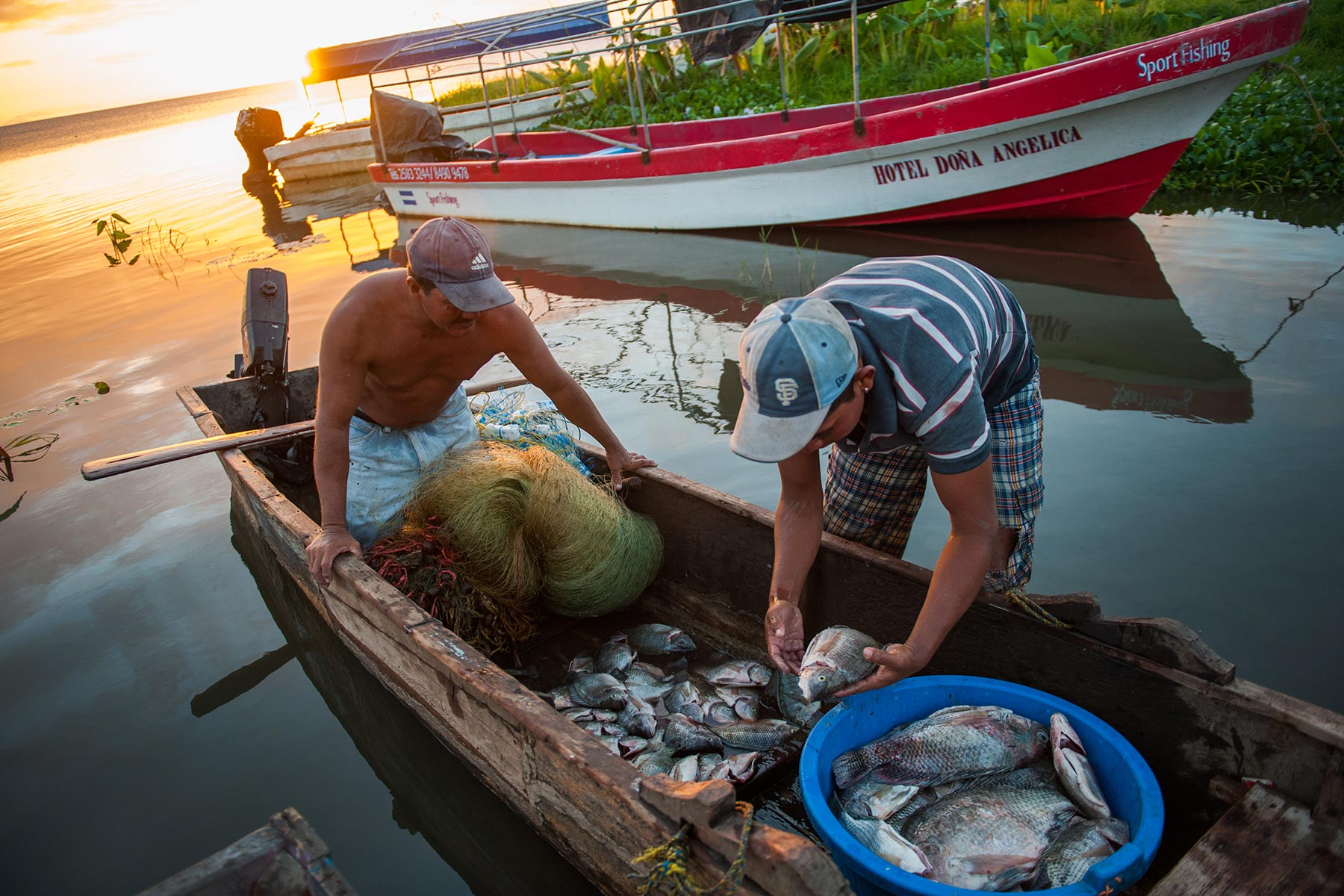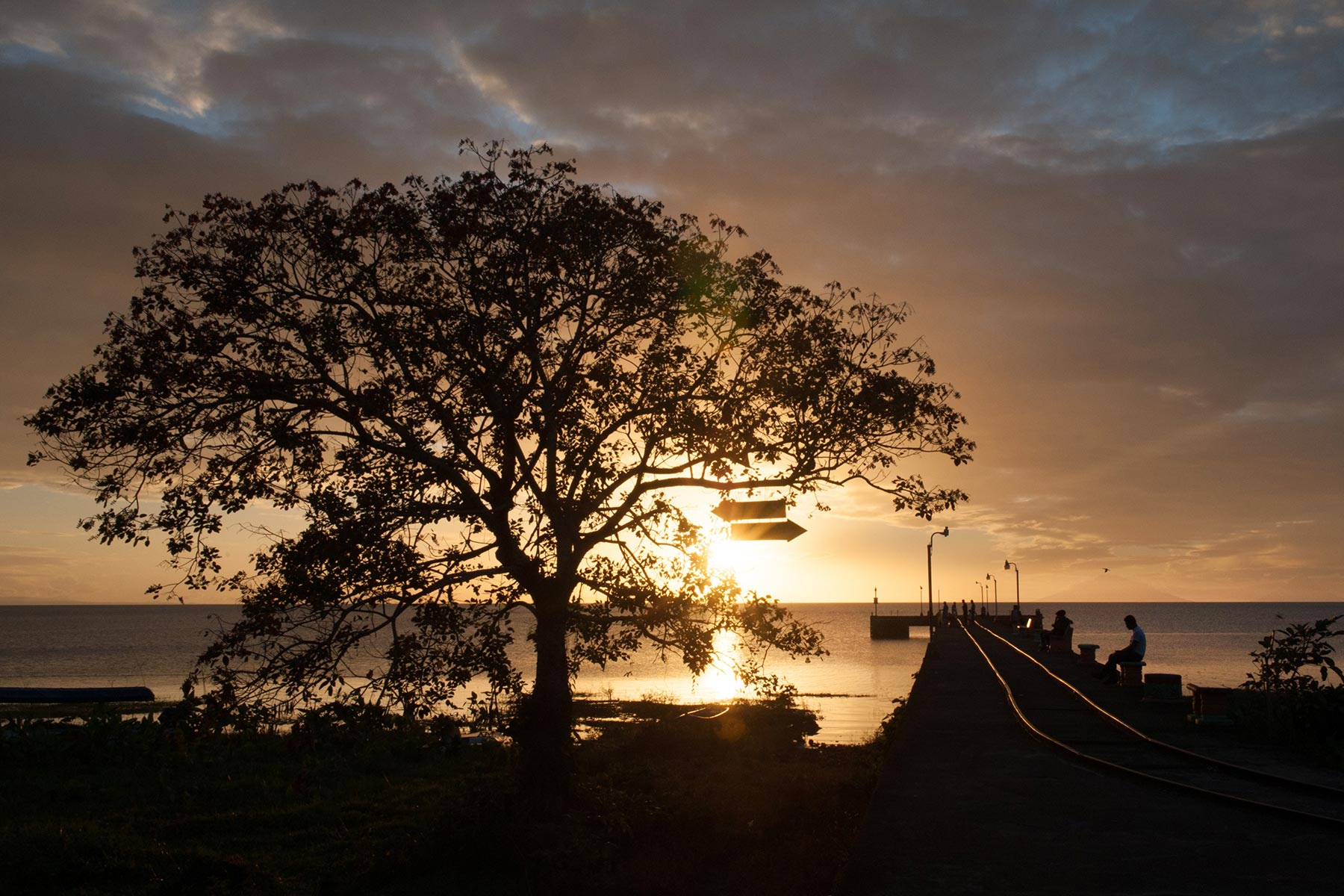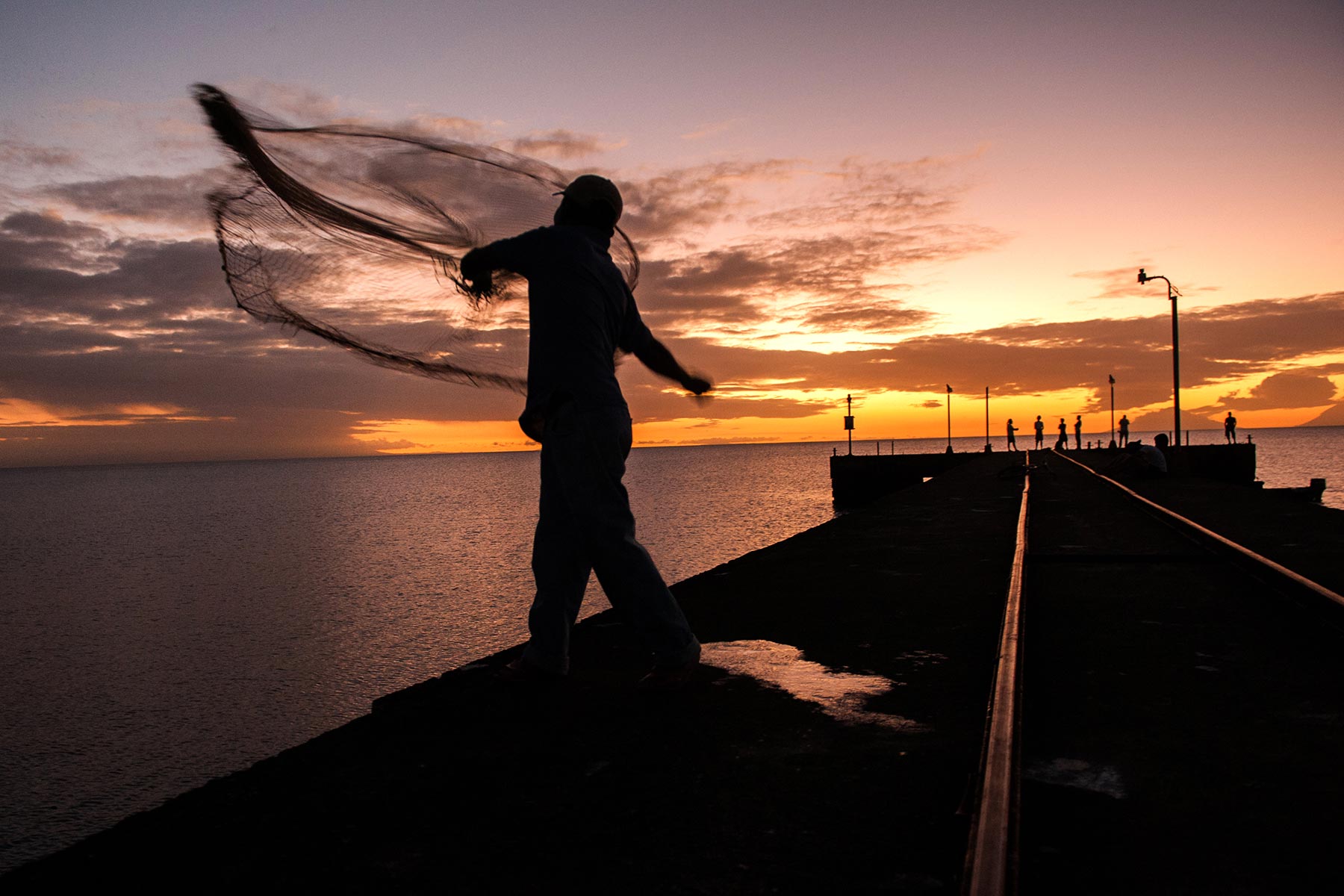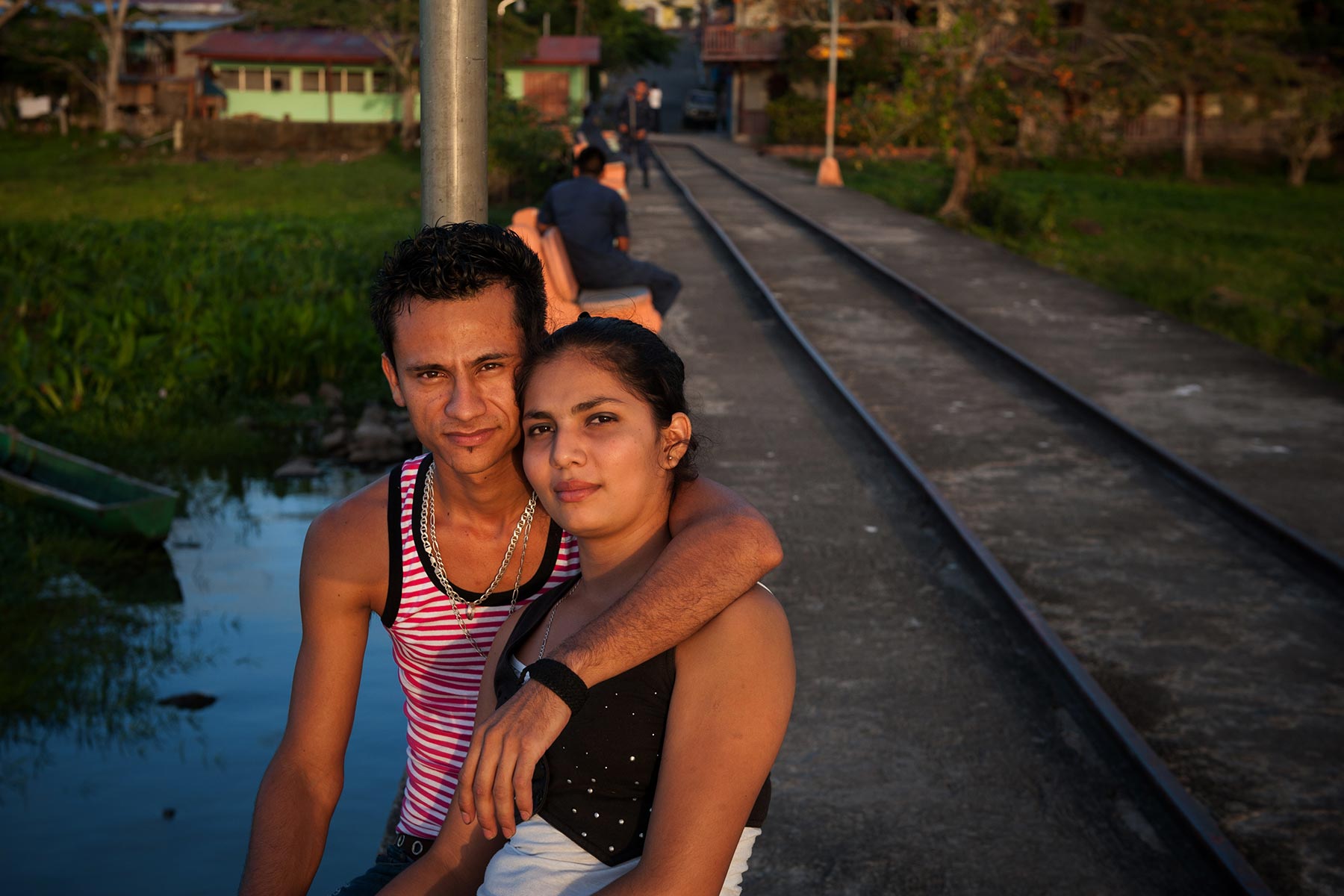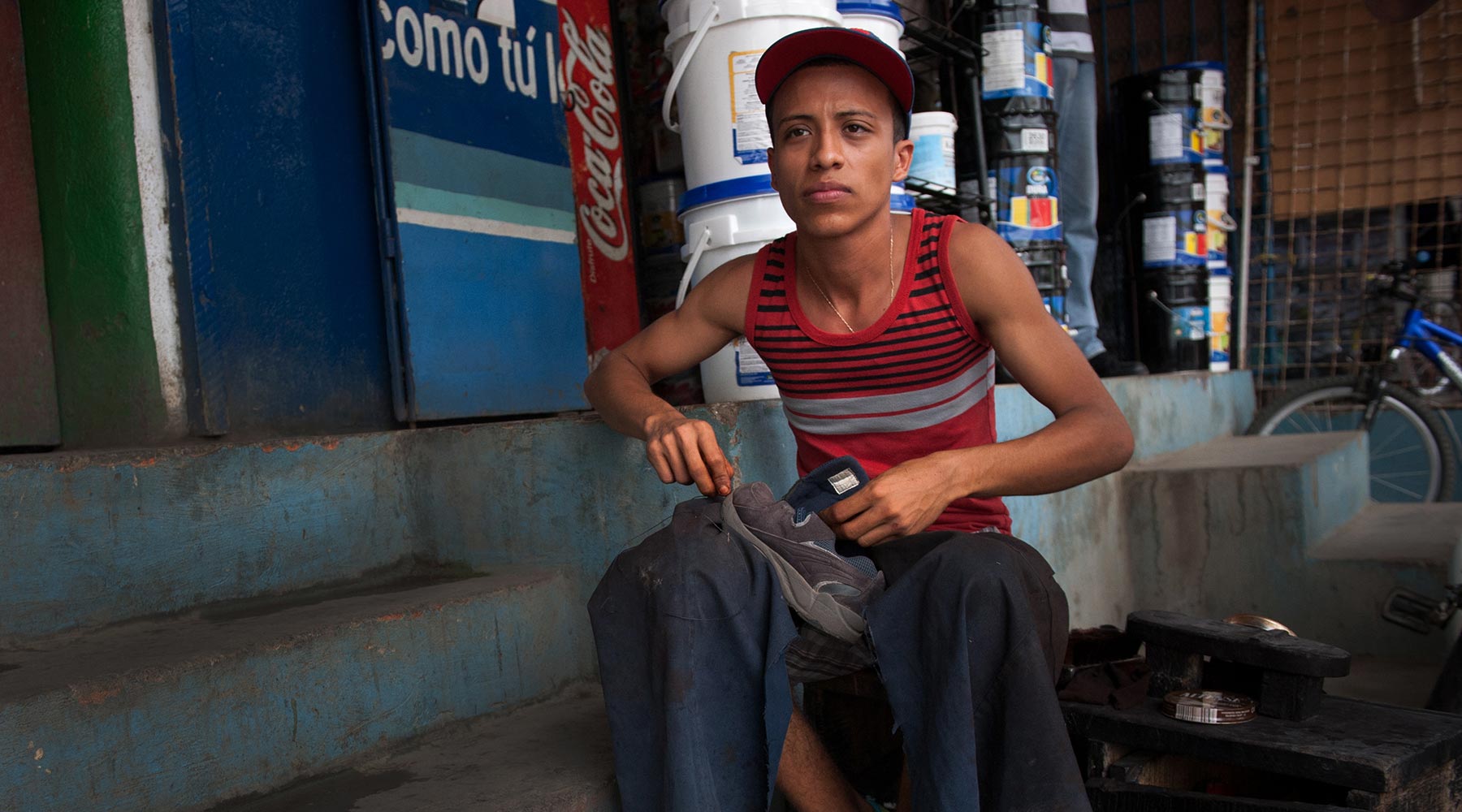
Bracing for a sea change
Massive dredging of Lake Nicaragua threatens drinking water and nearby fishing communities
A deep divide
Part three of a five-part series examining the impact of the Nicaragua canal.
It’s 7 a.m. and Sandra Rodríguez and her teenage daughter are standing in their wooden boat pulling in the last of 15 fishing nets laid out in these shallow protected wetlands just south of the small fishing village of San Miguelito.
It’s the season for catching guapote and gaspar. The latter is traditionally eaten during Holy Week, so it fetches a high price this time of year.
“If they don’t harm the wetlands and the environment, I think it’s good,” Sandra said when asked her opinion of the $50 billion Nicaraguan canal that the government says will pass through here. San Miguelito is one of 12 municipalities that lies within the area of direct influence of the project, though even here many of the details remain shrouded in mystery. “The problem is a lot of people haven’t been told what will happen.”
Lake Nicaragua, or Lake Cocibolca, is the second largest lake in Latin America. Locals have nicknamed it mar dulce, or “sweet sea,” as the freshwater lake is so large it stretches to the horizon. Besides supplying a source of income for fishing communities like San Miguelito, the lake is an important reservoir for drinking water and irrigation — one that scientists caution will grow in importance as climate change intensifies and threatens global water supplies.
The Nicaragua government agrees. According to Article 97 of Nicaragua’s General National Waters Law (Law 620), passed in 2010, Lake Nicaragua “should be considered as a natural reservoir of drinking water, being of highest interest and national priority for national security.”
That is why environmentalists throughout the country fear catastrophe if the government and its Chinese business partner, the holding company HKND, proceed with plans to build a 172-mile canal across Nicaragua, 66 miles of which will bisect Lake Nicaragua. In order for the enormous Triple E-class ships to pass through this shallow lake, which has an average depth of just 12.5 meters (41 feet), the project will require dredging 90 percent of the canal’s route through the reservoir.
Centro Humboldt, a prominent environmental NGO in Nicaragua, has called the canal and its sub-projects “the biggest threat to the environmental conditions of the country in its history.”
“They’re talking about moving 500 to 700 million metric tons of soil and rock from the bottom of the lake,” said Victor Campos, a civil engineer and deputy director of Centro Humboldt, sitting in his office in Managua. “So even though it’s not much surface that will be impacted it’s the intensity of how they’ll disturb the bottom of the lake that will significantly deteriorate the quality of the water. The other thing is the sedimentation and rocks are going to change the chemical composition of the lake. And this will not only diminish the water’s drinkability but it will also affect the habitat of the species that live in the lake.”

Scroll for more

Scroll for more

Scroll for more

Scroll for more
Julio César Murillo’s backyard has freezers stocked with fish for the acopio, or market, he runs out of his home along the lake. Fishermen pull up in their boats to sell their catch, which Murillo then sells to larger distributors who supply nearby cities such as Managua and Granada. He typically buys anywhere between 500 and 2,000 pounds of fish per day.
Nicaragua produces about 18.5 million pounds of fish per year, according to the Central Bank of Nicaragua. While the majority of that comes from the Atlantic and Pacific Coasts, small-scale fishing from Lake Nicaragua is the lifeblood of communities such as San Miguelito.
Murillo estimates there are only about 30 fishing boats in the town, but each boat has three workers. And “each fisherman is the head of a household.” He said there are also 20 or so buyers, or paneros, in San Miguelito who bring the fish to nearby communities to sell, and two acopios.
But sitting in an open-air space in the back of his home, where a banner for the ruling Sandinista National Liberation Front party hangs on the wall, Julio César and his wife Lilleth Flores say they’re not worried about the canal.
“The people really concerned are the peasants, whose property is going to be affected,” said Murillo.
On Christmas Eve, two days after the official groundbreaking of the canal project, protests erupted at several points along the proposed route. The most violent clashes were about a 25-minute drive away from San Miguelito in El Tule. According to La Prensa, a local daily, riot police fired tear gas and the altercation left 50 peasants injured.
“The situation with the canal is very difficult with the people because it’s not going well,” said María Consuelo, who owns a general store in the center of town. “Here we don’t have any problems because it doesn’t affect us directly. Where it’s going to go through — that’s where the problem is.”
According to a December poll by M&R Consultants, about two-thirds of Nicaraguans who don’t live directly along the canal route support the project. Of those who do live along the route, support drops to 42 percent. A majority of the country also believes the canal represents an opportunity to restore and preserve Lake Nicaragua, with only 14 percent of those living far from the route believing it will damage the lake.
Environmentalists disagree.
In November 2014, the Nicaragua Academy of Sciences invited local and international researchers to a workshop in Managua to identify critical technical questions related to the canal and its sub-projects. The environmental implications are vast: The proposed route crosses protected areas of biodiversity-rich rainforests, wetlands and reserves, including the Cerro Silva Natural Reserve, the Río San Juan Biosphere Reserve, the Indo Maíz Biological Reserve, and the Solentiname Archipelago. It would cut across the Mesoamerican Biological Corridor, forcing the clearing of hundreds of thousands of acres of forests and wetlands and disrupting the migration patterns of animals including endangered species such as tapirs, spider monkeys, harpy eagles and jaguars. That’s not to mention the collateral damage involved in damming rivers and flooding the inland community of Atlanta to create the 245 square-mile artificial Lake Atlanta.
Lake Nicaragua, however, remains at the top of their list of concerns.
“The biggest worry is Lake Nicaragua sedimentation,” said Dr. Gerald Urquhart, a tropical ecologist at Michigan State University who has worked extensively in Nicaragua and was one of the 20 participants on the expert panel.
Lake Nicaragua is naturally vulnerable to sedimentation because it is both shallow and windy, making sediments that settle on the lake floor easy to stir up.
These sediments trap toxins and other nutrients. Urquhart believes the initial dredging and regular maintenance dredging that the canal requires will redisperse them, reducing light penetration into the water and increasing oxygen deprivation. As a result, the lake ages faster, water quality deteriorates, and fish die.
Telémaco Talavera, spokesman for the Nicaragua Canal Development Project Commission, insists the project will suction the soil out in order to minimize the risk. But that has not convinced others. “That doesn’t do anything, however, about the traffic,” said Pedro Alvarez, chair of the civil and environmental engineering department at Rice University and another expert on the panel. The massive ships that will cross through the lake every day will be capable of carrying 12,500 containers and measure a quarter of a mile long, making sedimentation far from a one-time concern.
Other risks include salinization of the lake water, caused by Pacific Ocean waters entering the lake through the locks, and the introduction of invasive species from the container ships’ bilge water that could, among other things, threaten Lake Nicaragua’s native cichlid population. A government program to release tilapia into Lake Nicaragua in the 1980s is believed responsible for the dramatic decline in the native cichlids that has lasted up until today.
“The business says the impact [of salinization] won’t be major,” said Campos. “But if you look at the experience of Lake Gatún in Panama they are no longer extracting water directly from the lake for consumption because there’s too much salt.”
A sign that was installed by San Miguelito’s mayor’s office stands near the lake’s edge: “Lake Cocibolca is the source of our drinking water in the future. Do not pollute.”
The lake supplies drinking water for several municipalities including San Juan del Sur, Juigalpa and Cárdenas, and irrigation for many more.
“This lake is the principal water reservoir for Nicaragua and Central America,” said Campos. “The country up to now has had sufficient water from other resources but those resources are dwindling.” Due to dwindling water in the aquifers beneath Managua, he added, certain neighborhoods there do not have water throughout the day.
Climate change, furthermore, will exacerbate the water shortage, said Campos. According to the 2015 Global Climate Risk Index, Nicaragua is one of the countries most dramatically impacted by climate change. As a poor country with an agriculture-based economy, rising temperatures, droughts and floods can be especially devastating. The canal and artificial lake will require enormous volumes of water, reducing its availability for agriculture and other uses. “So the fundamental question,” the panel of experts organized by the Nicaragua Academy of Sciences concluded, “is whether the basins provide enough water today and in the future in light of projected climate change and subsequent development."
Environmentalists are appalled that Law 840 handed over rights to the country’s natural resources to the owner of the concession. Environmental lawyer and anti-canal activist Mónica López Baltodano argues that the concession exempts HKND from complying with environmental laws with regard to the canal or any of its subprojects, an accusation the government disputes. And it certainly doesn’t allay their fears that the owner of the concession is an unknown business from a country with a history of lax environmental oversight.
Alvarez said his research brings him to China several times a year. “The reason I go there so often is because it’s an environmental catastrophe,” he said. “I don’t want the same thing in Nicaragua.” He’d like to see HKND set aside an insurance bond for the many environmental disasters that could occur — for example, an oil spill in the lake.
Talavera told Al Jazeera he believes the possibility of an oil spill in the lake is “simply too remote.”
“The canal will be built according to all international safety standards where the environment is concerned,” he told Al Jazeera. “The Panama Canal was built over 100 years ago and more than 1.2 million ships have passed through there without an environmental accident of this nature.”


HKND contends that it has hired one of the top international consulting agencies, British firm Environmental Resources Management (ERM), to carry out its environmental impact assessment. ERM told Al Jazeera they plan to submit their report to the Government of Nicaragua and HKND sometime in May.
Campos points out that the evidence of the government’s environmental oversight so far has been lacking.
For example, HKND presented ERM’s environmental impact study for the initial work to the government on Dec. 17. The report of more than 500 pages was approved by the Ministry of the Environment just two days later, on December 19. On December 22 construction began.
“It’s impossible to verify a study is well done in two days,” said Campos. “And it didn’t comply with the laws on the books — they didn’t comply with the ordinary environmental law nor the legislation that Law 840 established.”
Campos believes one positive that has come out of the government’s lack of transparency around the project is that it has mobilized a movement committed to raising environmental issues.
“If the canal has had any good virtues,” he said, “it has been precisely to put on the table the issue of protecting our natural resources.”
As evening falls on San Miguelito, residents stroll along the pier that stretches from the shore — scattered with colored buildings in faded shades of orange, lavender peach and turquoise — to the sweet sea, where the sun sets beyond the horizon. An old man moves from side to side of the pier, casting his net in hopes of catching enough to bring his family a bucket of fish for dinner. Four young men sit together on the wood planks of the pier, talking and smoking. They have strong opinions on the canal, but refuse to give their real names, fearing retribution for criticizing the project. Whenever the patrolling guards come into sight, they lower their voices or change the subject.
Despite being a welder and possibly benefiting from an influx of construction jobs the canal project promises to bring, one of the men, who asked to go by Roberto, says protecting the environment is more critical than driving development.
“The environment is more important because if it’s contaminated and I can’t breathe and there’s viruses and things, than how am I going to live?” he said.
“When the Panama Canal was built 112 years ago or whatever there weren’t that many environmental issues like now. The ozone layer was ok, the water was ok. Now it’s different,” he said. “It’s more vulnerable I guess.”
Based on his experience doing construction on the roads around San Miguelito, he’s not optimistic the resources around him will be preserved. “When we were operating the machines we were always changing the oil and leaving the oil on the ground and the fuel. That’s the way these things work — you pollute,” he said.
“The people who are in charge of guaranteeing the environmental laws are complied with, they’re always going to say everything is fine but I guarantee it won’t be,” agreed his friend, who gave his name as Carlito. He says corruption is heavy, and lists a number of local projects that were started but never completed, in which shortcuts were taken and funds supposedly pocketed. He thinks the canal project will suffer a similar fate — with corruption making the rich richer and the poor poorer.
And the land will suffer too.
“The environment, the scenery, the nature is all going to change. We’re going to lose this beautiful view we have,” he said.
By now it’s pitch black on the pier but the night reveals a multitude of stars.
“We’re going to have these machines come in, these boats go by. They’re going to be spilling oil in the lake,” Carlito laments before getting up to leave. “We’re going to lose this lake.”

